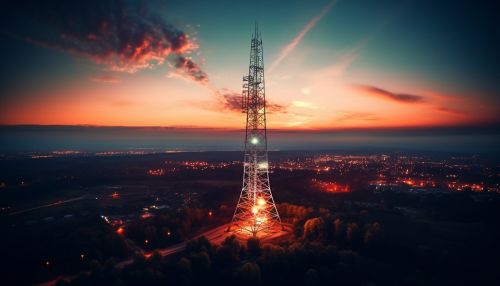Global System for Mobile Communications
Overview
The Global System for Mobile Communications (GSMA) is a standard developed by the European Telecommunications Standards Institute (ETSI) to describe protocols for second-generation (2G) digital cellular networks used by mobile devices such as mobile phones and tablets. It was first deployed in Finland in December 1991. Today, the GSMA is the de facto global standard for mobile communications with over 5 billion people across more than 220 countries utilizing its services.


History
The GSMA was developed as a replacement for first-generation (1G) analog cellular networks. The idea was conceived by the Conference of European Posts and Telecommunications (CEPT) in 1982. The goal was to create a pan-European mobile phone system that would not interfere with other systems. The CEPT formed a committee known as the Groupe Spécial Mobile, which is where the GSM acronym originated. The group's efforts led to the creation of a digital system with greater capacity, better quality, and wider range than the existing analog systems.
Technical Details
The GSMA operates in the 900 MHz and 1800 MHz bands in Europe and the 850 MHz and 1900 MHz bands in the Americas. It utilizes Time Division Multiple Access (TDMA) to divide each frequency into time slots and Frequency Division Multiple Access (FDMA) to provide multiple channels within the frequency range. The system also includes a comprehensive set of services and features, including voice calls, data transfer, text messaging, and roaming.
Architecture
The GSMA network is structured into a number of discrete sections. These include the Mobile Station (MS), the Base Station Subsystem (BSS), the Network and Switching Subsystem (NSS), and the Operation and Support System (OSS). Each of these components plays a crucial role in the functioning of the GSMA network.
Services
The GSMA offers a wide range of services, including telephony, data transfer, text messaging, and multimedia messaging. It also supports roaming, which allows users to continue to use their mobile phone or other device when traveling internationally.
Security
The GSMA includes several security measures, such as authentication, encryption, and temporary identity numbers, to protect against eavesdropping and fraud. However, these measures have been criticized for their potential vulnerabilities, leading to ongoing efforts to improve GSMA security.
Future Developments
The GSMA is continually evolving, with new features and services being added regularly. Future developments are likely to include more advanced data services, improved security measures, and greater integration with other types of networks.
See Also
3G - The third generation of mobile telecommunications technology. 4G - The fourth generation of mobile telecommunications technology. 5G - The fifth generation of mobile telecommunications technology.
